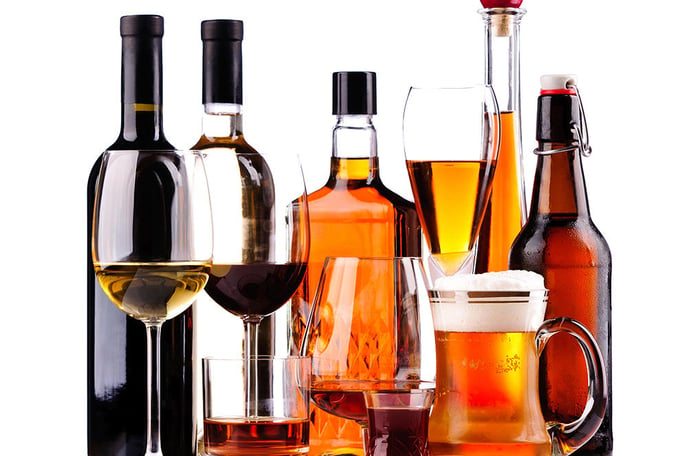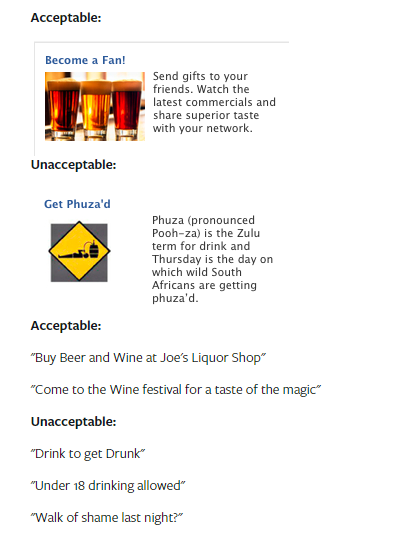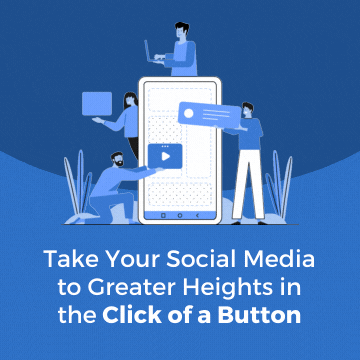
Alcohol brands are known for their clever and catchy advertising. They make it look easy, but they have to abide by strict regulatory guidelines when it comes to marketing and engagement. The three major alcohol supplier trade associations- the Beer Institute, Distilled Spirits Council of the United States (DISCUS) and the Wine Institue- have adopted voluntary advertising and marketing codes.
The basic principles of each code are:
- Digital marketing communications intended for adults of legal purchase age.
- Digital marketing communications should be placed only in media where at least 71.6 percent of the audiences is of the legal purchasing age.
- Digital marketing communication that involves direct interaction with a user should require age affirmation prior to engagement.
- User-generated content on a site or page controlled by a brand must be monitored and moderated on a regular basis.
- Digital marketing communications that are intended to be forwarded by users should include instructions that the content shouldn't be forwarded to individuals below the legal purchasing age.
- Digital marketing communications must respect user privacy.
Since alcohol brands are restricted to platforms where 71.6% of the audience is of the legal purchase age, they have to research each network before creating profiles. Even if the platform passes this requirement, it doesn't give the alcohol company the right to follow users or reply to them. To avoid this, you need to have age affirmation, which Facebook and Twitter both have. Instagram does not have age verification as of right now, so the brands can be present on the platform but can not reply to users' comments. Brands must also monitor user-generated content to ensure it does not promote irresponsible or underage drinking or is inappropriate in any way.
Alcohol companies spend 31.9% of their marketing money in traditional media such as TV, radio and print. 7.9% were directed to online and digital marketing. Online and digital expenditures showed a four-fold increase since 2008. Sponsorships and public entertainment accounted for 17.8% of their marketing budget.
Twitter Policies on Alcohol Promotion
Twitter restricts the promotion of online and offline sale of alcohol and general awareness of alcohol brands. These restrictions are based on the product or country. Any advertisement for alcohol content must:
- not target minors or encourage, suggest, or entice underage drinking
- not use characters, sports-person, celebrities, or images/icons appealing to minors
- not use minors or pregnant women as models in advertising
- not imply that drinking in excess is good, or that alcohol has therapeutic, relaxing or stimulative properties
- not imply that alcohol has health benefits, can improve sexual, social, athletic or professional performance
- not mislead or confuse users into thinking alcoholic beverages are soft drinks or candy
- not associate drinking with activities that are potentially dangerous, require significant care, skill, etc., or are antisocial or illegal
- not depict people under the influence of alcohol
- not emphasize a product's alcoholic strength (promoting a product as having low or no alcohol content is acceptable)
Facebook Policies on Alcohol Marketing
Twitter and Facebook have many similar policies pertaining to alcohol marketing on the platform. On Facebook, alcohol ads may not:
- include content intended to appeal to anyone younger than the permitted target age group
- portray or be targeted at pregnant or nursing women
- be untruthful or misleading about alcohol, its use, effects or properties
- portray people consuming or encourage people to consume alcohol rapidly, in excess, or irresponsibly
- negatively portray abstinence from alcohol consumption or moderate alcohol consumption
- portray or promote intoxication or the intoxicating or stimulating effects of alcohol
- positively portray the strength of an alcoholic beverage
- portray alcohol consumption as causing or contributing to the achievement of personal, intellectual, business, sporting, physical, social, sexual or other success
- portray alcohol as being healthy, offering medical or therapeutic benefits, aiding relaxation, alleviating individual or collective problems, as contributing to or being a sign of maturity
- associate the operation of any vehicle or engagement in any sport of potentially hazardous activity as having taken place during or after the consumption of alcohol
- associate violent, dangerous, or antisocial behavior with the consumption of alcohol

The Beer Institute, DISCUS and the Wine Institute are great resources if you have any more questions about alcohol marketing.











Your Comments :